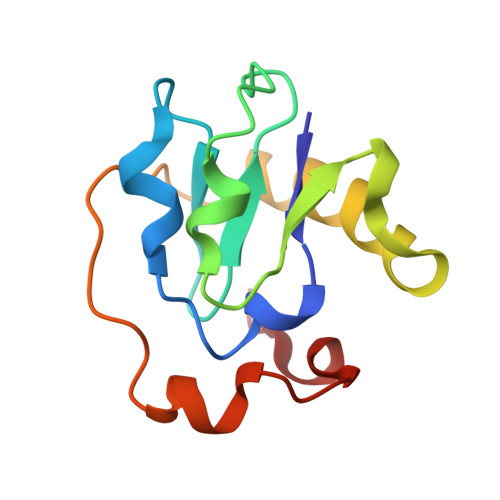Site-directed mutagenesis of Azotobacter vinelandii ferredoxin I: cysteine ligation of the [4Fe-4S] cluster with protein rearrangement is preferred over serine ligation.
Shen, B., Jollie, D.R., Diller, T.C., Stout, C.D., Stephens, P.J., Burgess, B.K.(1995) Proc Natl Acad Sci U S A 92: 10064-10068
- PubMed: 7479727
- DOI: https://doi.org/10.1073/pnas.92.22.10064
- Primary Citation of Related Structures:
1FRX - PubMed Abstract:
The [4Fe-4S] cluster of Azotobacter vinelandii ferredoxin I receives three of its four ligands from a Cys-Xaa-Xaa-Cys-Xaa-Xaa-Cys sequence at positions 39-45 while the fourth ligand, Cys20, is provided by a distal portion of the sequence. Previously we reported that the site-directed mutation of Cys20 to Ala (C20A protein) resulted in the formation of a new [4Fe-4S] cluster that obtained its fourth ligand from Cys24, a free cysteine in the native structure. That ligand exchange required significant protein rearrangement. Here we report the conversion of Cys20 to Ser (C20S protein), which gives the protein the opportunity either to retain the native structure and use the Ser20 O gamma as a ligand or to rearrange and use Cys24. X-ray crystallography demonstrates that the cluster does not use the Ser20 O gamma as a ligand; rather it rearranges to use Cys24. In the C20S protein the [4Fe-4S] cluster has altered stability and redox properties relative to either C20A or the native protein.
- Department of Molecular Biology and Biochemistry, University of California, Irvine 92717, USA.
Organizational Affiliation:


















